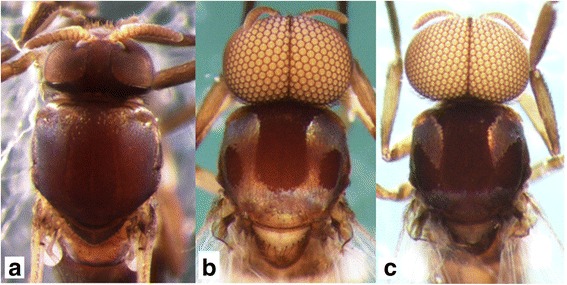Researchers from the Zoological & Ecological Research Network (ZEN), and Tropical Infectious Diseases Research & Education Centre (TIDREC), University of Malaya have successfully discovered 111 new species of black flies belonging to five subgenera of the genus Simulium in the Oriental Region.

Credit : Takaoka et al., 2016
Black flies (Diptera: Simuliidae) are biting insects of medical and veterinary importance. This is because females of certain species not only cause dermatoses like itching, rash and edema to humans and cattle but also are vectors of human and zoonotic onchocerciases, when they bite. On the other hand, black flies attract the attention of environmental ecologists as an ideal bio-indicator because their immature stages can breed only in clean running fresh waters and not in polluted or stagnant waters. Black fly larvae’s role in aquatic ecosystems is also targeted for ecological studies since they are one of the principal processors of plant debris in streams.
The paired labral fans of the larvae curve back upstream and serve to catch small bits of food, finely divided plant material and small invertebrates. Recent studies of black flies included biodiversity and phylogenetic relationships through analyses of larval salivary gland chromosomes and DNA sequences of certain genes. As such, comprehensive knowledge of the fauna of black flies is essential as basic information to solve the problems or to promote a wide range of black fly research.
Since November 2010, University of Malaya Simuliidae Research Project researchers (Dr. Hiroyuki Takaoka, Dr. Mohd Sofian-Azirun, Dr. Chee Dhang Chen, Dr. Van Lun Low, Dr. Zubaidah Ya’cob, Mr. Koon Weng Lau, and Mr. Nor Azhar Jamil) have collaborated and carried out field surveys in eight countries to explore the simuliid fauna in the Oriental Region, and discovered 111 new species which belong to five subgenera of the genus Simulium (27 species from Malaysia, 45 species from Vietnam, 17 species from Thailand, 10 species from Nepal, seven species from Indonesia, three from Myanmar, two species from Taiwan, one species from Laos and one species from India), bringing the total number of black flies in the Oriental Region to 554.
The researchers provided a new classification scheme of Gomphostilbia, which is the most abundant and complicated subgenus in the region, to facilitate species identification, as well as describing these new species. In addition, they presented a wealth of Oriental black flies’ biodiversity through advanced approaches such as ecological studies of assemblages of aquatic stages, chromosome and DNA sequence-based analyses.
The current research is a further development of our previous achievements including the discoveries of three new subgenera and 320 new species of black flies, diagnosis of ten cases of human infections with Onchocerca dewittei japonica (a new filarial parasite of wild boar in Japan), determinations of natural and experimental black fly vectors of Onchocerca dewittei japonica and five other Onchocerca species in relation to the transmission of zoonotic onchocerciasis in Japan, and findings of natural infections of three Simulium species with filarial larvae in Thailand (first record of black fly’s vectorial role in Southeast Asia).
Their black fly research is in good and steady progress by a remarkable integrated team power displayed by morphotaxonomic, ecological, cytogenetic and molecular phylogenetic specialists, together with competent PhD students.







